The Milestar Patagonia M/T might not be familiar to a lot of off-road aficionados, but it is a very capable tire in a variety of conditions. Check out our review below for our long-term test results.
The release of a new off-road tire is always met with anticipation by enthusiasts. When the new product is an entirely new brand, the interest is even greater. Most offroaders haven’t heard of Milestar, let alone its parent company, Tireco. That’s a shame because they’ve hit the market with a tire that deserves some attention.
In a marketplace crowded with mud terrains, it’s easy to dismiss yet another blocky tread design. That pretty well sums up my skepticism when I saw the Milestar tent at Overland Expo West in 2017. But ever-curious, I paused to look over what their team had to offer. And the more I heard, the more interested I became.
Fast forward to a UPS truck pulling away from our driveway, a black stack of D-rated 37×12.50r17 tires left behind. The tires, Milestar Patagonia M/T models, are one of the most distinct mud terrains released in recent years for a number of reasons. Offered in sizes from 31X10.50R15LT to a massive 40X13.50R17LT, and across five wheel diameters (15” to 20”), Milestar didn’t skimp on options. Or on true sizing. Most sizes measure within a quarter inch of nominal sizing.
Based in California, Tireco launched in 1972 and offers commercial as well as consumer tires. Their auto and light truck options are full spectrum, fall under the Milestar sub-brand, and include the all-terrain segment represented by a street leaning tread design in the Patagonia A/T R (rugged). Which makes the distinct design of its aggressive sibling, the M/T (Maximum Traction), all the more surprising.
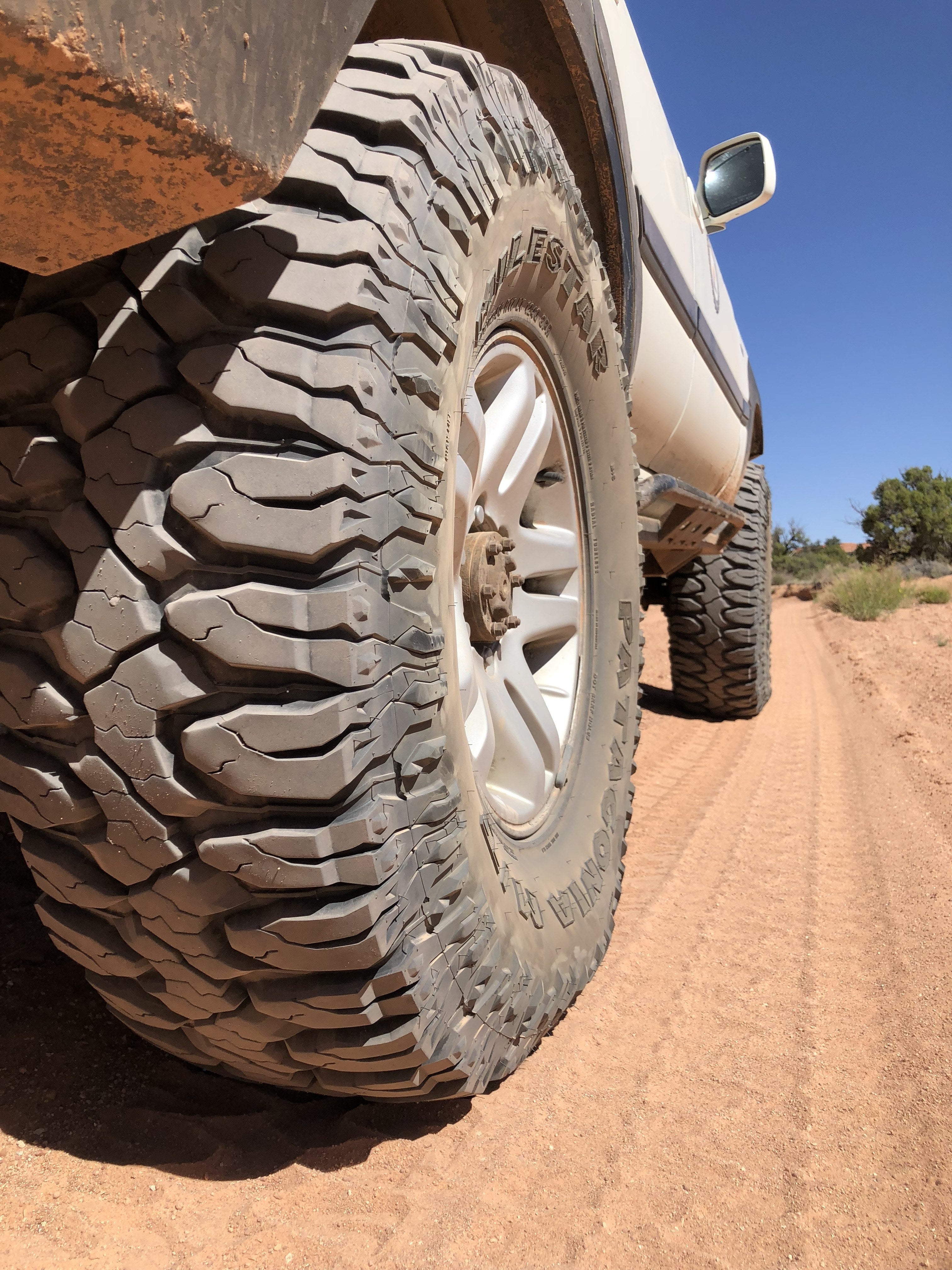
Table of contents
Design
The Milestar Patagonia M/T catches your attention immediately. Its prominent center block band, shoulder bar pattern and memorable name (boldly emblazoned on the sidewalls) don’t allow you to confuse it with any other tire. Beyond the visual personality of the tire, the next eye-catching feature is likely the sticker price. At just over $200 apiece street pricing for a 315/70r17, Milestar has hit a competitive tier in the market.
Construction of the M/T is in keeping with standards today’s users have come to expect. Combining 3-ply sidewalls, stone ejectors and significant, complex siping in a high void design, this mud terrain is more than an add-on to the otherwise mostly urban-oriented tires that Tireco produces. As of 2019, it will be offered in a new F-rated version for ¾ and 1-ton applications.
That stack of UPS-delivered tires was mounted up in Fall of 2018, and followed a set of long-term tested BFG KO2’s, which had, in turn, replaced Interco’s TrXus M/T. With such a new release I was very interested to see what personality the Milestar tires would exhibit. Technicians at Big O Tire mounted each 72lb fresh rubber on Toyota factory rims, balancing them with ~6oz apiece.
With such a unique tread pattern, the Patagonia M/T immediately left me wondering how it would handle, and how loud the drive to each trailhead would be. Having switched to the smooth rolling KO2s nearly two years before, I was accustomed to tires that I gave little thought to. And this, it turns out, would be the next surprise from the tire named for the famously harsh southern Andes region of Chile and Argentina.
Performance
What did I expect from the Milestar Patagonia MT? Pretty much everything I never experienced. Retailing for under $250 in the 37” model, Tireco has brought a very affordable entry into a crowded market. But in many instances, affordable is synonymous with fragile. And in the backcountry a fragile tire no longer sounds like a deal, but rather a liability. Equally concerning is when affordable is synonymous with sub-par engineering, resulting in poor handling, wear and noise.
The Patagonia M/T immediately catches your attention by how little it makes itself known. For a mud terrain, it uncharacteristically delivers road manners that are easily forgotten. Surprisingly quiet and smooth, and with no tracking issues whatsoever, even in 37s, they offer a ride not dissimilar to the BF Goodrich’s KO2s. And compared to our earlier Interco Trxus MT’s, the Patagonias are a noticeable improvement on the road, and especially in initial and long-term balancing.
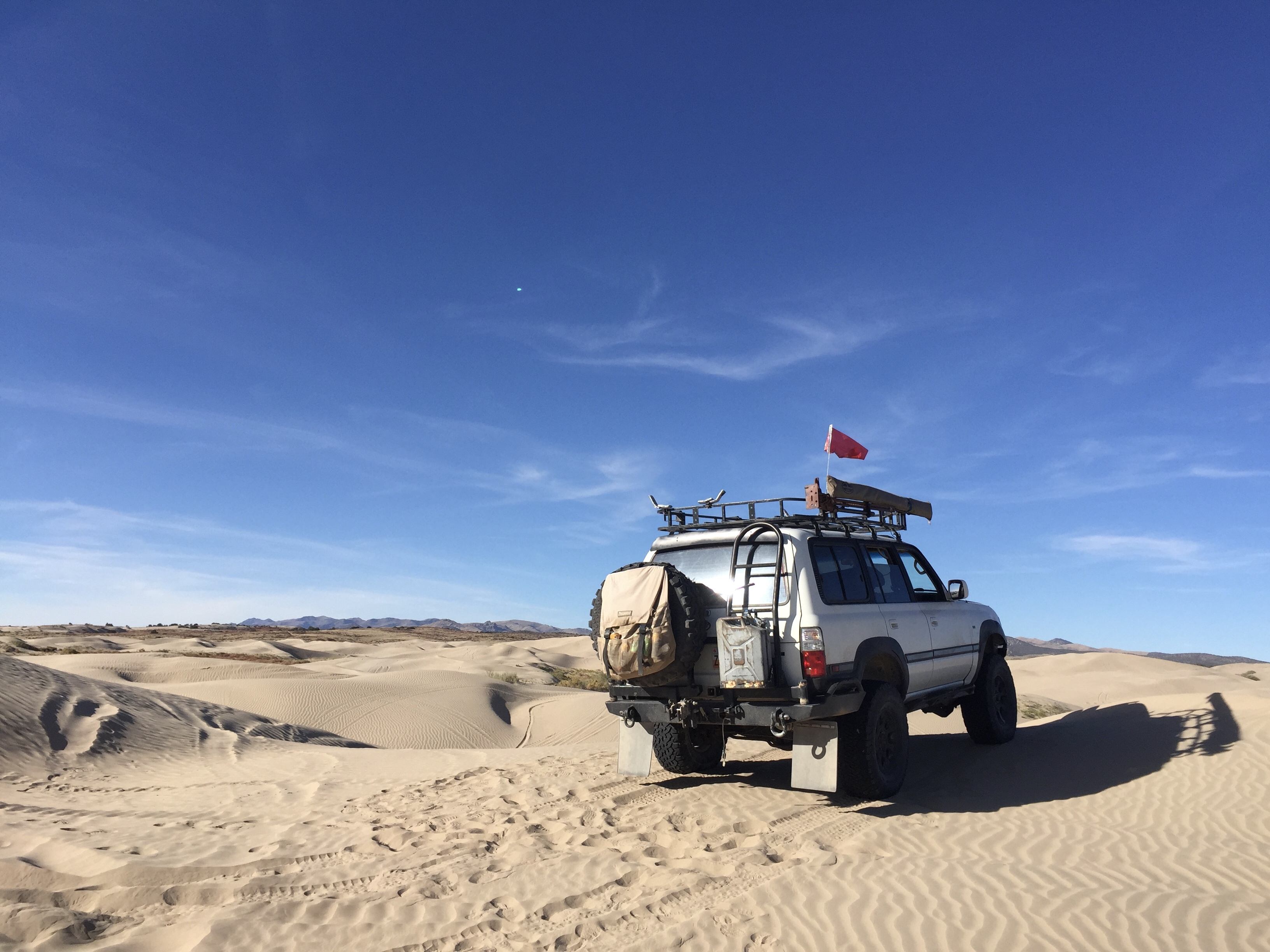
In canyon cornering the Patagonia’s stability was (remarkably) as good or better than the 35” KO2s they replaced. Yes, you read that correctly. Though the KO2’s were E-rated, they were shorter as well, yet the Patagonias proved more confidence inspiring in the twisties, which may speak to the carcass strength Tireco has engineered the M/Ts around. And over the past year that impression has remained true.
All sizes of the Milestar Patagonia M/T come from the factory with 19/32” tread depth. More generous than some, and shallower than a few, the blocks are about middle of the pack in depth. What stands out about their highly distinct blocks are the patterning and the distinct angular sides of the blocks. The unmistakable center zone of blocks may help explain the tire’s unusually good road manners, the blocks creating a nearly continuous surface.
Nearly as distinct are the shoulder blocks, sidewall protection bars, and the significant factory siping. The visual result is a mud terrain that stands out on the trail, even if the boldly emblazoned PATAGONIA is obscured by mud. Much subtler, and definitely easier to overlook, is the “fine print” on these tires. Someone captured the intended spirt of adventure, as well as reflected the brand’s sense of humor, when corporate allowed the tire’s motto to appear across the sidewall, reading simply: HIGH LIFE.
Over the course of a year, we covered 6,000 miles riding atop the Patagonia in our Land Cruiser. Traversing Utah and the surrounding region, both longitudinally and by latitude, 2018 trips pointed the Toyota and its tires across a mix of surfaces, blending salt and mud flats with slickrock, gravel, sand, rocks rounded and angular, and the full variety of winter’s changes. Both towing and unladen, we used them in the same mix of terrain our previous AT and MT tires had rolled across.
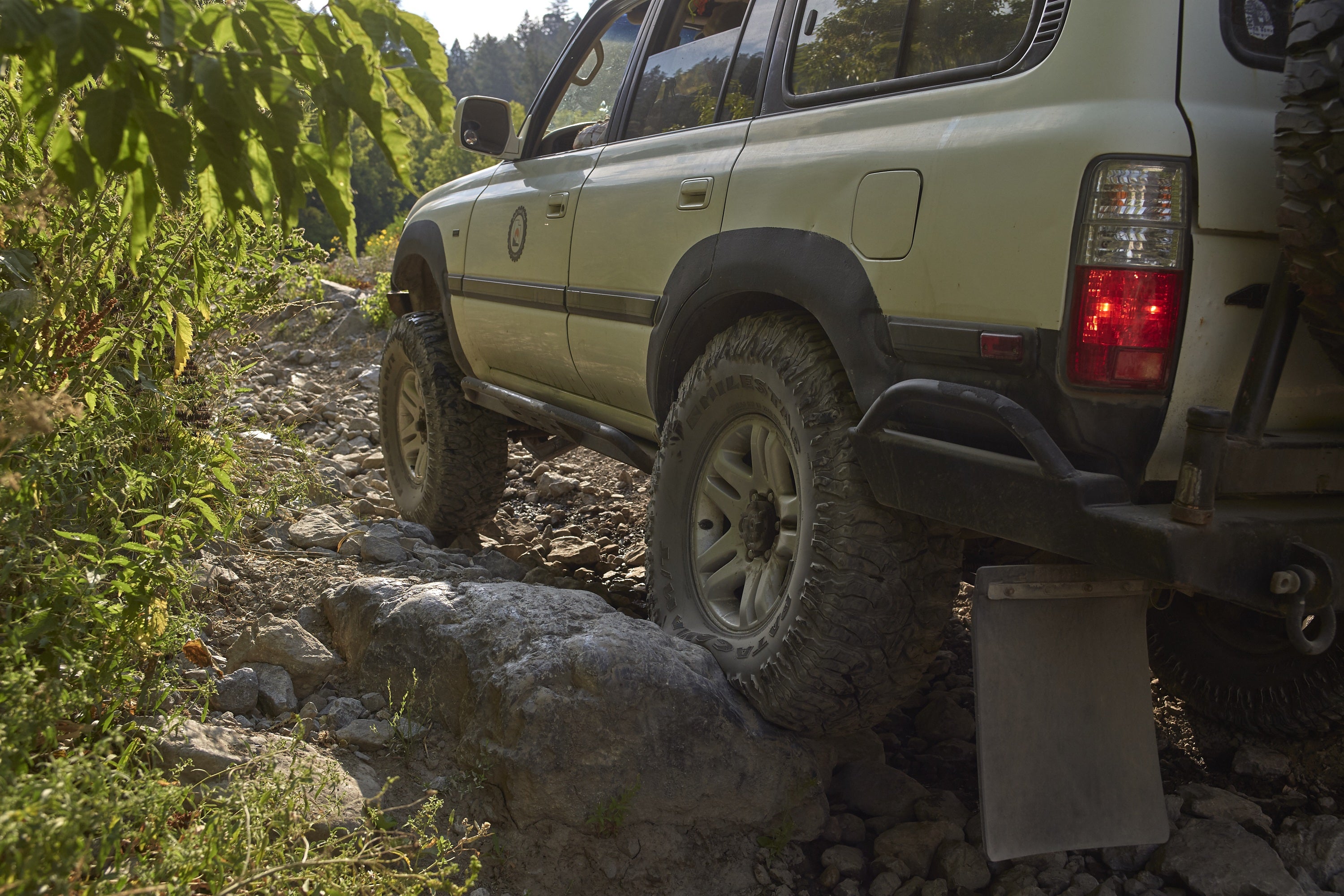
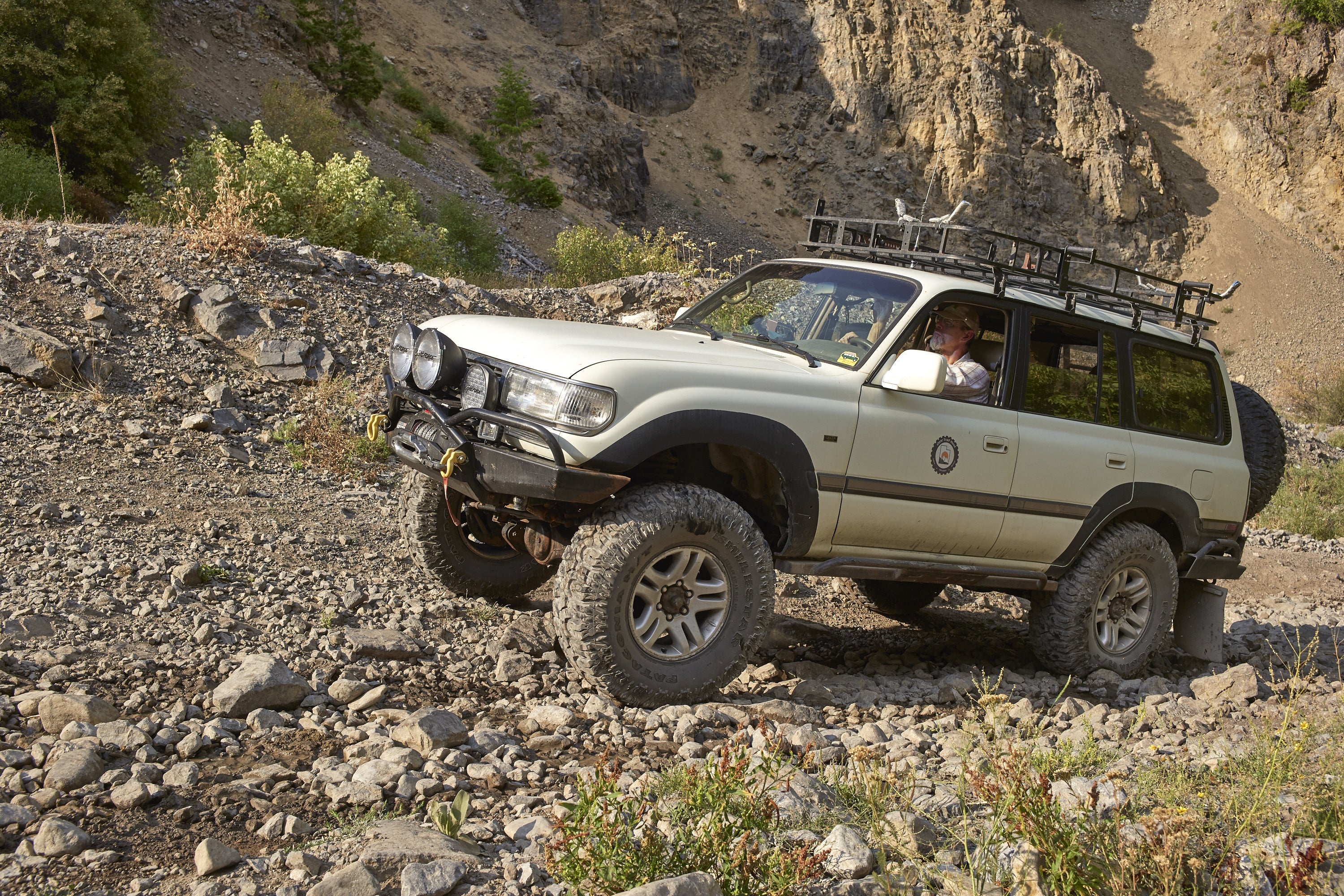
The months dominated by Rocky Mountain ice and snow are usually when mud terrains owners remind themselves of how great blocky treads perform throughout the rest of year. Aware of the slippery winter personality of MTs, they go easy on the throttle and keep an eye out for ice or hard packed snow. But all MTs are not created equal in winter behavior. Though never their forte, some MTs are downright scary in frozen conditions (e.g., our experience running Toyo Open Country MTs). The same can’t be said of the Patagonia M/T. Between its siping, rubber compound and angular block design, the tire proved itself as a reasonably composed, consistent performer throughout Utah’s winter. Though no mud terrain is confidence-inspiring on glazed, frozen surfaces, Milestar did not overlook winter safety in the tire’s design. In fact, in my experience with numerous mud terrains, only Interco’s Trxus M/T has proven better across a variety of winter conditions.
Thankfully, winter conditions only blanket our region for a third of the year. The moisture of shoulder seasons fill in the gap before trails dry, rapidly supplanting muck with dust. Showing itself to be an all-arounder, the Patagonia lacked any unsettling drama in the range of moisture. Facing mud pits, rutted tire tracks and the soup of pre-/post-freeze months, the tires were reasonably efficient at ejecting mud and finding purchase when there was nothing solid beneath. Neither the strongest nor the weakest performing, dollar-for-dollar they more than held their own in inclement conditions.
As the desiccating heat of summer baked the Great Basin and Colorado Plateau, we pointed the Cruiser into Nevada, southern Utah, and Arizona. Equal parts sand, sandstone, packed dirt and remnants of geologic fracturing, the region presents tires and drivers with a continuous change-up of trail surfaces, as well as blistering pavement once June gives way to July. Tracking as true on those conditions as they do on pavement, Milestar’s most trail-focused design transitions from one surface to the next without flinching.
To find fault with the Patagonia M/T is to point out its compromise in tire compound. Sticky rock crawling shoes these are not. When the slickrock tilts upwards or boulders and ledges abound, the true grip of rubber is revealed. Like street shoes used on a climbing route, vertical rock tells a lot about how tacky a tire is. No slouch—in grip or cut resistance—in these situations, the Patagonia is nonetheless a tire it pays to adjust psi on. Flexing and molding to rocks acceptably well, this mud terrain needs that conformity to realize its grip potential. For modest rock crawling and dry conditions that is a non-issue. But encounter wet conditions or angles steep enough to make you pucker, and the durometer of this tire’s rubber shows its Achilles’ heel.
Wear, predictably, is not the strongest characteristic of the Patagonia M/T. Like all mud terrains, accelerated wear is the tradeoff for trail-focused performance. At the 3,000 mile mark, the Patagonia’s tread depth had lost 1/32”, a reasonable decline. Six months later, after twice that many miles had been wracked up, the tread depth decreased to an average of 15-16/32”, or a loss of 18%. Assuming replacement at 5/32, we could reasonably expect ~24,000 miles in a low power application like a Land Cruiser. That’s far from unreasonable, and certainly better than some competitors. In fact, many consumers report longevity closer to 30,000 miles, depending upon usage.

Wear is not solely understood by steadily declining tread depth. Tires can succumb to the torture of trail miles in torn off chunks and cuts. The Patagonia M/T reveals more about its mettle in this area. Burdened with 3 tons of truck, our tires emerged surprisingly well after a year. Chunking was minimal, most occurring among the vertical sidewall protective bands, with the absent pieces being small, most lost a ¼” at a time. Overall, these were very acceptable losses. Similarly, cuts/tears marking the passage of trail miles were also small. Only one extended ¾”, and most lay at the base of a block or band. These patterns of weakness suggest the rubber compound is, as grip on steep rock also hinted, neither the most resilient nor a slouch.
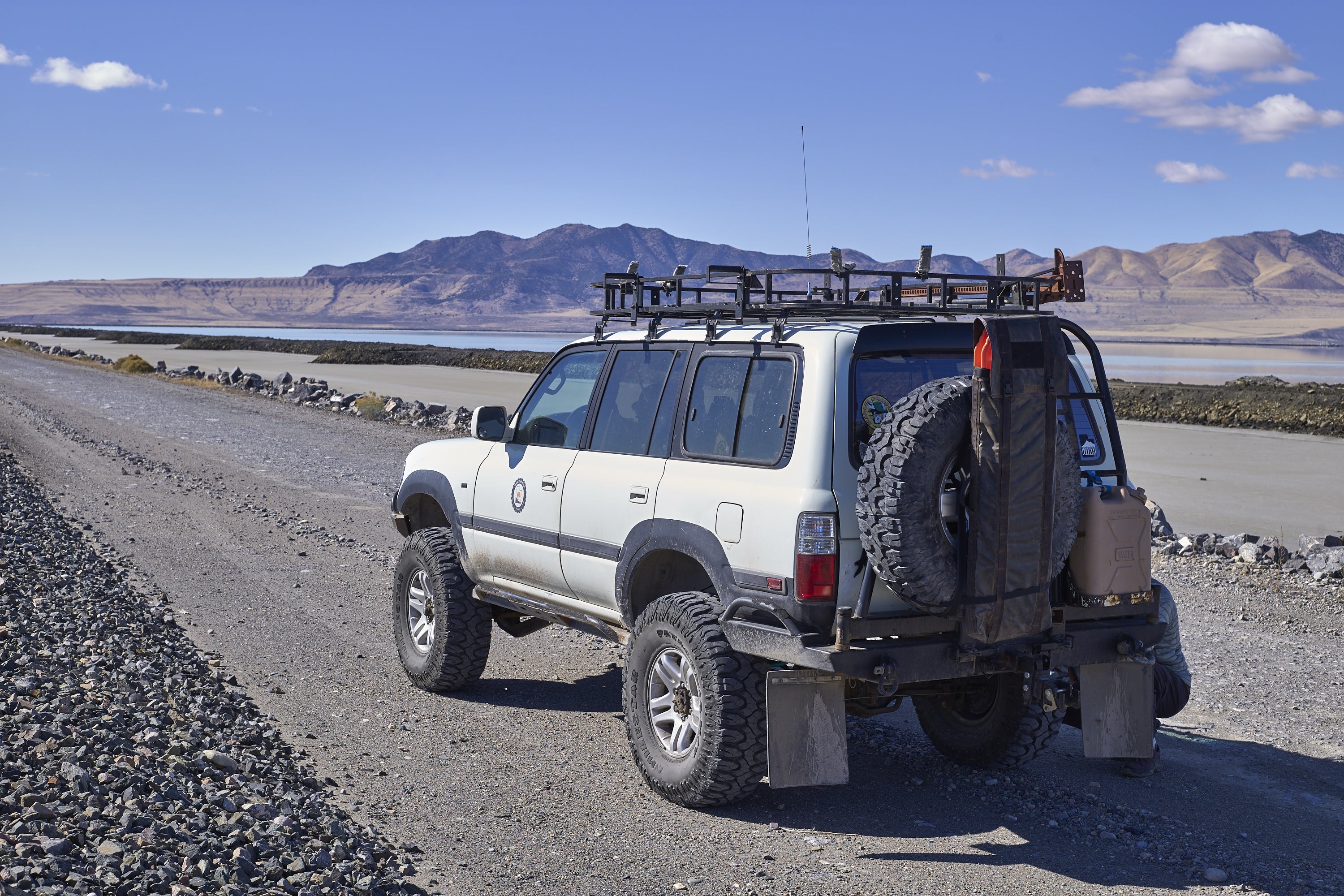
Our Final Verdict
Amid the crowded offroad tire market, it would be a mistake to overlook the Milestar Patagonia M/T. Milestar has served up a valuable addition to the raft of mud terrains that beg to be mounted on your rig’s rims. Visually distinct, gifted with surprising road manners, and more than capable on a range of trail/road conditions, the Patagonia M/T is the real deal. All of which makes the tire’s price tag a surprise, or simply a bonus. Offered in an equally surprising breadth of sizes, this is a tire to take a close look at.
About the Gear Doctor: Dr. Sean Michael has been designing, abusing and testing outdoor gear since the 1980s. He began reviewing for Off-road.com in 2000, and today lives in the Northern Wasatch Mountains, where he is Professor of Outdoor Product Design & Development at Utah State University. Follow his trips and gear at thegeardoctor on Instagram.
We are committed to finding, researching, and recommending the best products. We earn commissions from purchases you make using the retail links in our product reviews. Learn more about how this works.
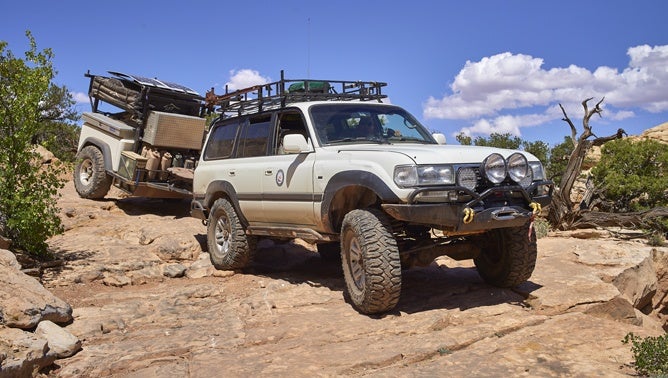


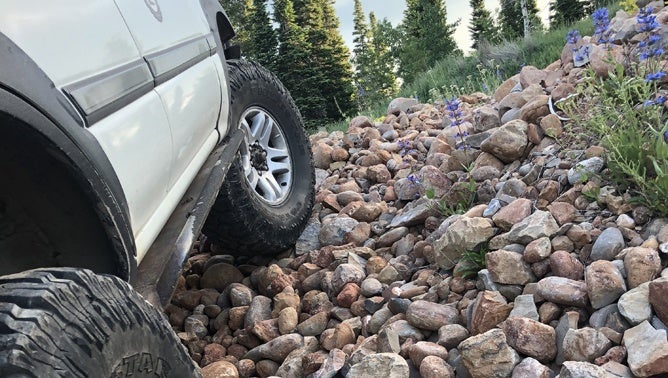
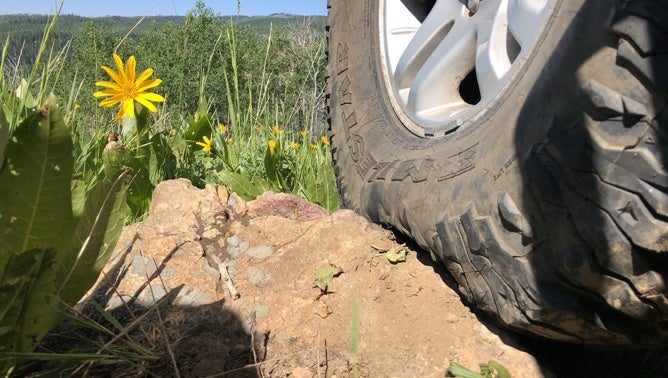
 Your Privacy Choices
Your Privacy Choices